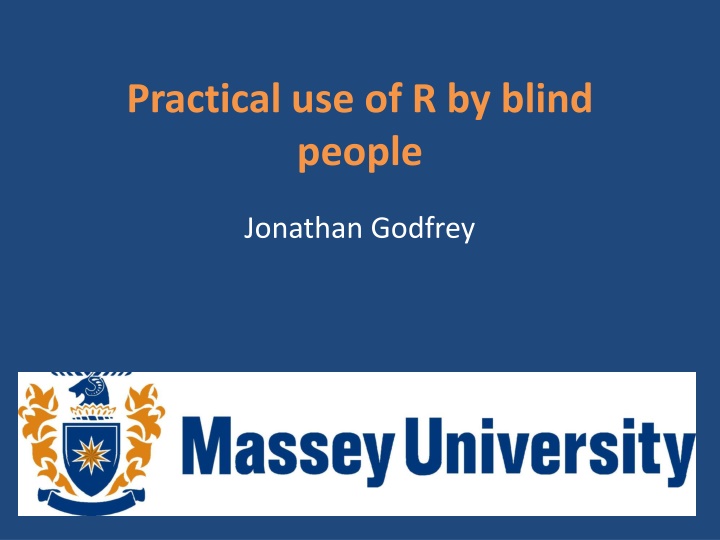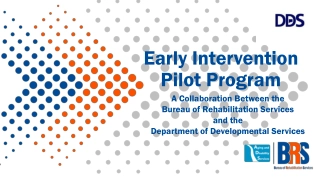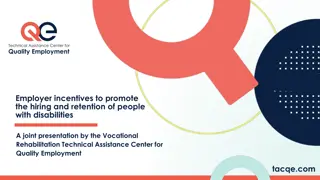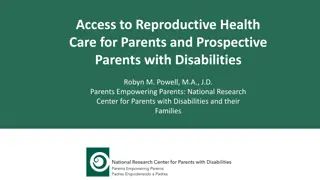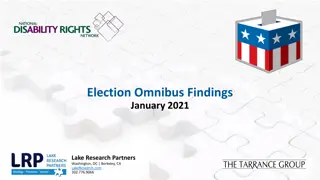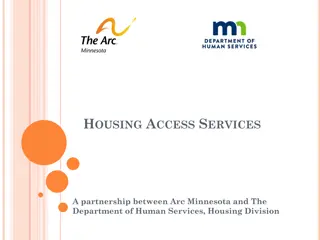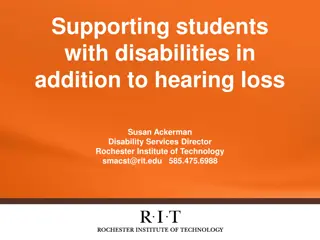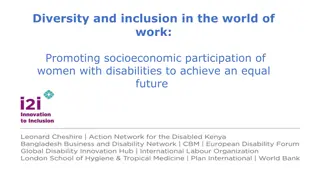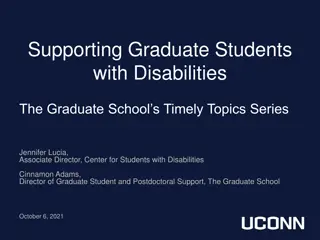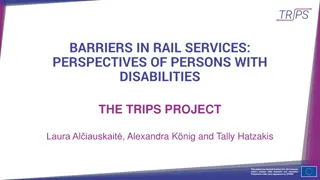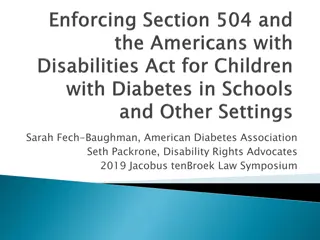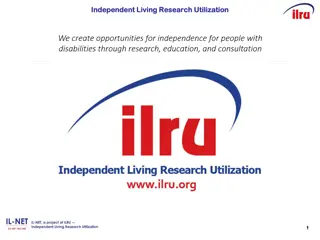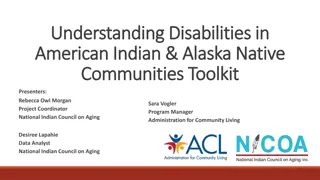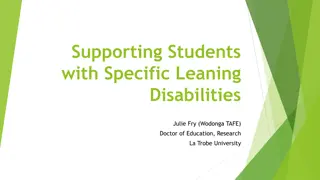Empowering Delawareans with Vision Disabilities
The Division for the Visually Impaired (DVI) in Delaware works to empower individuals who are blind or visually impaired to be self-sufficient. They offer services such as independent living, education, vocational rehabilitation, and business services. With a focus on enhancing adaptive skills, providing low vision services, and promoting education for students, DVI strives to improve the employment and poverty rates among those with visual disabilities in the state.
Download Presentation

Please find below an Image/Link to download the presentation.
The content on the website is provided AS IS for your information and personal use only. It may not be sold, licensed, or shared on other websites without obtaining consent from the author.If you encounter any issues during the download, it is possible that the publisher has removed the file from their server.
You are allowed to download the files provided on this website for personal or commercial use, subject to the condition that they are used lawfully. All files are the property of their respective owners.
The content on the website is provided AS IS for your information and personal use only. It may not be sold, licensed, or shared on other websites without obtaining consent from the author.
E N D
Presentation Transcript
Practical use of R by blind people Jonathan Godfrey
R is the best I ve said it before (R Journal 2013). Why? All the reasons why R is the best for the sighted world, and: It works with screen readers (synthesised speech output from the computer) Help documentation is in accessible HTML pages. Lots of options for methods of working some of which are better than others. I promote R as the go-to statistical software when the other options fail blind users.
Other options SAS is accessible, but it s hard work to get it set up properly. Stata is accessible but not a practical option for a back up plan. SPSS is perhaps the most widely used by blind students, often with much difficulty and seldom totally independently. Minitab is a poor option for the novice blind user. GenStat, Statistica JMP, and probably many others are utterly in accessible.
R keeps on giving In the last six months, I learnt how to get R installed without using the full installation process R-3.1.0-win.exe /silent The playing around done by Robert Erhardt prior to teaching a blind student led to the serendipitous discovery of a solution to a problem that had haunted my use of R for over two years. (R Journal 2014) He discovered that the locking up of the R terminal window could be resolved by a single tap of the ALT key to get normal service to resume. (I ll demonstrate this if time permits) I tested his solution using a number of screen readers and versions of Windows.
I keep giving I ve now been invited to a total of five ICCHP Summer University events held in Europe. I ve missed the two Austrian events 2010 and 2012. These events aim to assist blind students intending to study mathematical subjects when they attend university. I show them R. I also observe them using R in different ways. The helpful hints for blind users is kept track of via my webpages at: http://R-resources.massey.ac.nz July/Aug 2011 September 2013 July 2014
The BrailleR package I started the BrailleR package as a vehicle to share the best ways of working as a blind user. It hopes to present text output in a different structure to make it clearer; Redirecting the console window output to a text file (built on functions from the TeachingDemos package); Text descriptions of graphical tools such as histograms or scatter plots; Shortcuts that get common jobs done faster; and, Multiple language support (help needed here.)
What BrailleR needs Future development of the BrailleR package is somewhat limited by several factors. I d really like to see all graph objects given a class attribute. This would make writing support functions considerably easier. I d like to see more package vignettes processed into HTML instead of the inaccessible PDF used now. Might this be possible using the knitr package? If it won t happen in base R, then maybe I can get it to happen on the fly using functions included in BrailleR.
Front ends for R Some testing of front ends has been undertaken. While I might recommend them to sighted students, I cannot do so for blind users. R commander gets more attention in my user neighbourhood than any other front end especially as it generates code that can be reused in scripts. Screen readers fail with the menus and dialogue boxes. The only solution is to write scripts for the screen readers To handle every menu item. This is not practical and would leave a blind user dependent on the script writers keeping up with developments in the Rcmdr package. A similar problem exists for the Deducer package. The menu items are however read properly (in the same way as any R GUI menu) but the dialogue boxes do not all read perfectly. The chief problem is that the actual routine called by the menu items does not work with screen readers.
Solution to Front End Problem There probably won t be one until someone tries to develop a GUI that relies completely on calling standard R functions, or functions in a select set of add-on packages. This GUI would need to be written using a toolkit that spoke naturally to the operating system. The wxWidgets toolkit is an example of a toolkit that does use the standard accessibility features built into the Windows operating system without the programmer needing to do any extra work. Some other toolkits can be used to develop accessible GUIs. QT is used in some quite accessible applications.
RStudio The excellent RStudio IDE is not currently accessible. I think the work practices I employ are about as efficient as I could expect to be using RStudio. I do know of blind users that want to work within an IDE. They want bracket matching and tab completion in particular. Given these features do exist in some other accessible IDEs, I expect the solution to a useful IDE for R will be through extension of the other IDEs.
Graphs and getting access R offers a variety of file types that are useful for saving graphs. The most powerful from a blind person s perspective is the scalable vector graphic (SVG) format as it can store added detail. The detail we might want is much simpler than that offered by the SVGAnnotation (Nolan & Temple Lang, 2012, JStatSoft v46i1) and gridSVG (Murrell & Potter, 2014, RJournal) packages. Saving as SVG is achievable but could be more easily done if this file type was one of those used in savePlot() or in the pull-down menus of the graph window.
What can a blind person do with an SVG? If an SVG version of any graphic is annotated with the right detail, we can gain tactile/audible feedback about the visual image.
My plan for R and SVGs Once I take possession of an embosser (USD2000) and a touchpad (USD600) I will work out how best to use SVGAnnotation and gridSVG packages to create useful SVGs without human intervention. Weight: 7.95kg Height: 14.5cm Width: 43.2cm www.viewplus.com RRP: USD2000 The IVEO touchpad has been available for a number of years, but the cost of braille embossers has been prohibitive until very recently.
An alternative to the touchpad ViewPlus Technologies Inc. is developing a digital pen solution that I will be testing next week. This product is currently known as the Tiger Digital Pen.
Contact information a.j.godfrey@massey.ac.nz
